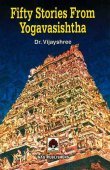Saguna, Saguṇa, Shaguna: 17 definitions
Introduction:
Saguna means something in Hinduism, Sanskrit, Buddhism, Pali, Marathi, Hindi, biology. If you want to know the exact meaning, history, etymology or English translation of this term then check out the descriptions on this page. Add your comment or reference to a book if you want to contribute to this summary article.
Alternative spellings of this word include Shagun.
In Hinduism
Purana and Itihasa (epic history)
Source: archive.org: Shiva Purana - English Translation1) Saguṇa (सगुण) refers to “one who is possessed of attributes”, and represents an epithet of Śiva, according to the Śivapurāṇa 2.2.10. Accordingly as Viṣṇu said to Brahmā:—“[...] He is distinct from illusion. He is free from desires. He is the creator of illusion yet uninfluenced by illusion. He is an adept. He is possessed of attributes (saguṇa) yet independent (svatantra) of them. He is blissful in Himself. He is free from suspicions and alternatives”.
2) Saguṇa (सगुण) refers to “(becoming) qualitative”, according to the Śivapurāṇa 2.3.13 (“Śiva-Pārvatī dialogue”).—Accordingly, as Pārvatī said to Śiva: “[...] With my blessings you become qualitative [i.e., saguṇa] and embodied. Without me, you are attributeless and incompetent to perform any activity. Being always subservient to Prakṛti you perform all activities. Self-controlled, free from aberrations and untainted by me how can you perform them? If you are really superior to Prakṛti, if what you say is true, you need not be afraid to be near me, O Śiva”.

The Purana (पुराण, purāṇas) refers to Sanskrit literature preserving ancient India’s vast cultural history, including historical legends, religious ceremonies, various arts and sciences. The eighteen mahapuranas total over 400,000 shlokas (metrical couplets) and date to at least several centuries BCE.
Vaishnavism (Vaishava dharma)
Source: Pure Bhakti: Bhagavad-gita (4th edition)Saguṇa (सगुण) refers to “(1) With material qualities (2) Possessing transcendental qualities”. (cf. Glossary page from Śrīmad-Bhagavad-Gītā).

Vaishnava (वैष्णव, vaiṣṇava) or vaishnavism (vaiṣṇavism) represents a tradition of Hinduism worshipping Vishnu as the supreme Lord. Similar to the Shaktism and Shaivism traditions, Vaishnavism also developed as an individual movement, famous for its exposition of the dashavatara (‘ten avatars of Vishnu’).
Shaktism (Shakta philosophy)
Source: Google Books: ManthanabhairavatantramSaguṇa (सगुण) refers to “one who is with qualities”, according to the Lalitāsahasranāma.—Lalitā’s thousand names are eulogized in the Lalitāsahasranāma, describing the goddess’s spiritual beauty on the analogy of physical, sensuous beauty. [...] In short, the Kula rites—sexual yet chaste—share in the same ambiguity as the goddess who presides over them. One way that the apparent contradiction is resolved is to accommodate the two conditions into the two aspects of deity. Tripurā in her immanent, manifest form ‘with qualities’ (saguṇa) is passionate, while her unmanifest form `devoid of qualities’ (nirguṇa) is passionless. To indicate this ambiguity in her nature she is called ‘Devoid of Qualities’ (nirguṇā) (130), which is thus the same as calling her ‘Devoid of Desire’ (niṣkāmā) (142) and ‘Devoid of Passion’ (nīrāgā) (156). So even though from one point of view she is highly passionate, she remains free of desire. Although, she gives passion (kāmadā) and arouses attachment (rāga-mathanī) (157), she also frees from it.

Shakta (शाक्त, śākta) or Shaktism (śāktism) represents a tradition of Hinduism where the Goddess (Devi) is revered and worshipped. Shakta literature includes a range of scriptures, including various Agamas and Tantras, although its roots may be traced back to the Vedas.
Dharmashastra (religious law)
Source: Oxford Academic: Homo Ritualis: Hindu Ritual and Its Significance to Ritual TheorySaguṇa (सगुण) (Sanskrit; in Nepalese: Sagūn) (lit. “with good qualities, with virtue”) is a presentation of certain items, such as new dresses and rice, dried fish, red powder, flowers, eggs, lentil cake (vaḥ), coins, alcohol (aila), and so on for giving the auspicious tikā. In the Parbatiyā tradition, sagūn is sometimes a tikā with yoghurt. It is often given from (Nev.) dhaupati, “flat (bowls of) yoghurt,” a pair of small cups or saucers with yoghurt used for a representation, especially in a Buddhist context, of the Four Brahmāvihāras or Eight Immortal Beings (aṣṭacirañjīvi), and for a dhau svagã, that is, a kind of tikā with yoghurt on the right (men) or left (women) temple.

Dharmashastra (धर्मशास्त्र, dharmaśāstra) contains the instructions (shastra) regarding religious conduct of livelihood (dharma), ceremonies, jurisprudence (study of law) and more. It is categorized as smriti, an important and authoritative selection of books dealing with the Hindu lifestyle.
Biology (plants and animals)
Source: Wisdom Library: Local Names of Plants and DrugsSaguna in the Bengali language is the name of a plant identified with Tectona grandis L.f. from the Verbenaceae (Verbena) family. For the possible medicinal usage of saguna, you can check this page for potential sources and references, although be aware that any some or none of the side-effects may not be mentioned here, wether they be harmful or beneficial to health.

This sections includes definitions from the five kingdoms of living things: Animals, Plants, Fungi, Protists and Monera. It will include both the official binomial nomenclature (scientific names usually in Latin) as well as regional spellings and variants.
Languages of India and abroad
Pali-English dictionary
Source: Sutta: The Pali Text Society's Pali-English DictionarySaguṇa, (adj.) (either sa3+guṇa1 1, as given under guṇa1; or sa°=saṃ° once, as in sakṛt, +guṇa1 2) either “with the string, ” or “in one”; Vin. I, 46 (saguṇaṃ karoti to put together, to fold up; C ekato katvā). This interpretation (as “put together”) is much to be preferred to the one given under guṇa1 1; saguṇaṃ katvā belongs to saṅghāṭiyo, and not to kāyabandhanaṃ, thus: “the upper robes are to be given, putting them into one (bundle). ” (Page 661)

Pali is the language of the Tipiṭaka, which is the sacred canon of Theravāda Buddhism and contains much of the Buddha’s speech. Closeley related to Sanskrit, both languages are used interchangeably between religions.
Marathi-English dictionary
Source: DDSA: The Molesworth Marathi and English Dictionarysaguṇa (सगुण).—a (S) That has attributes and perfections--the Deity: also that has qualities or properties--a thing in general. saguṇācē ādhārānēṃ nirguṇāsa pāvaṇēṃ To attain unto the apprehension and enjoyment of the unknown and universal Spirit and Essence through the contemplation and adoration of him as manifested with attributes and perfections in the works of creation; to attain, "through Nature, unto Nature's God."
Source: DDSA: The Aryabhusan school dictionary, Marathi-Englishsaguṇa (सगुण).—a That has attributes and per- fections-the Deity; also that has qualities or properties-a thing in general.
Marathi is an Indo-European language having over 70 million native speakers people in (predominantly) Maharashtra India. Marathi, like many other Indo-Aryan languages, evolved from early forms of Prakrit, which itself is a subset of Sanskrit, one of the most ancient languages of the world.
Sanskrit dictionary
Source: DDSA: The practical Sanskrit-English dictionarySaguṇa (सगुण).—a.
1) Possessed of qualities or attributes.
2) Possessed of good qualities, virtuous.
3) Worldly.
4) Furnished with a string (as a bow).
5) Possessed of the qualities in rhetoric.
Source: Cologne Digital Sanskrit Dictionaries: Shabda-Sagara Sanskrit-English DictionarySaguṇa (सगुण).—mfn.
(-ṇaḥ-ṇā-ṇaṃ) 1. Having or endowed with properties, qualities, &c. 2. Worldly. 3. Having a string, (as a bow.) E. sa with, guṇa a quality.
Source: Cologne Digital Sanskrit Dictionaries: Benfey Sanskrit-English DictionarySaguṇa (सगुण).—adj. endowed with qualities, [Vedāntasāra, (in my Chrestomathy.)] in
Saguṇa is a Sanskrit compound consisting of the terms sa and guṇa (गुण).
Source: Cologne Digital Sanskrit Dictionaries: Cappeller Sanskrit-English DictionarySaguṇa (सगुण).—[adjective] furnished with a rope or string, having attributes, qualities, or virtues.
Source: Cologne Digital Sanskrit Dictionaries: Monier-Williams Sanskrit-English Dictionary1) Saguṇa (सगुण):—[=sa-guṇa] [from sa > sa-gajāroha] mf(ā)n. furnished with (or together with) a string or cord, [Mahābhārata; Kāvya literature] etc.
2) [v.s. ...] furnished with [particular] attributes or properties, [???]
3) [v.s. ...] having qualities, qualified, [Bhāgavata-purāṇa; Vedāntasāra]
4) [v.s. ...] having good qualities or virtues, virtuous (-tva n.), [Kāvya literature; Kathāsaritsāgara] etc.
5) [v.s. ...] worldly, [Monier-Williams’ Sanskrit-English Dictionary]
Source: Cologne Digital Sanskrit Dictionaries: Yates Sanskrit-English DictionarySaguṇa (सगुण):—[sa-guṇa] (ṇaḥ-ṇā-ṇaṃ) a. Having qualities.
[Sanskrit to German]
Sanskrit, also spelled संस्कृतम् (saṃskṛtam), is an ancient language of India commonly seen as the grandmother of the Indo-European language family (even English!). Closely allied with Prakrit and Pali, Sanskrit is more exhaustive in both grammar and terms and has the most extensive collection of literature in the world, greatly surpassing its sister-languages Greek and Latin.
Hindi dictionary
Source: DDSA: A practical Hindi-English dictionary1) Śaguna (शगुन) [Also spelled shagun]:—(nm) see [śakuna].
2) Saguṇa (सगुण) [Also spelled sagun]:—(a) possessed of attributes (as —[brahma]); endowed with qualities; ~[ṇī] endowed with qualities; ~[ṇopāsanā] worship of God possessed of attributes.
3) Saguna (सगुन) [Also spelled sagun]:—(nm) an omen, good omen; augury; see [saguṇa].
...
Kannada-English dictionary
Source: Alar: Kannada-English corpusSaguṇa (ಸಗುಣ):—
1) [noun] knowledge of augury.
2) [noun] a kind of bird ( = small owl) supposed to give indication of what will happen in future.
3) [noun] a thing or happening supposed to foretell a future event, either good or evil; an omen.
--- OR ---
Saguṇa (ಸಗುಣ):—[adjective] having a characteristric, quality or attribute.
--- OR ---
Saguṇa (ಸಗುಣ):—
1) [noun] he who is having characteristrics, qualities or attributes.
2) [noun] the oneness with the Brahma, who is attributed with certain characteristics, qualities, etc.
Kannada is a Dravidian language (as opposed to the Indo-European language family) mainly spoken in the southwestern region of India.
See also (Relevant definitions)
Partial matches: Sha, Guna, Ca.
Starts with: Cakunakkaran, Cakunam, Cakunattiyanam, Saguna-brahman, Sagunabrahma, Sagunabrahmavadi, Sagunanirgunavada, Sagunanirgunavadartha, Sagunaradhane, Sagunarupa, Sagunarupin, Sagunasakshatkara, Sagunatva, Sagunauti, Sagunavati.
Ends with: Apasaguna, Asaguna, Bisaguna, Caturdashaguna, Dashaguna, Doshaguna, Ekadashaguna, Mriduparushaguna, Pancavimshaguna, Parameshaguna, Pratyakshaguna, Purushaguna, Rasaguna, Sarvasaguna, Sparshaguna, Tamasaguna, Visheshaguna.
Full-text (+29): Saguna Brahman, Sagunin, Sagun, Sagunatva, Sagunanirgunavada, Sagunya, Sagunavati, Shagun, Shakuna, Sarvasaguna, Cakunattiyanam, Shiva, Samadhi, Nirguna, Prakatanem, Nirguna-brahman, Karana, Ceshtavinem, Sharadatilaka, Rupadem.
Relevant text
Search found 65 books and stories containing Saguna, Saguṇa, Shaguna, Sa-guna, Sa-guṇa, Śaguna; (plurals include: Sagunas, Saguṇas, Shagunas, gunas, guṇas, Śagunas). You can also click to the full overview containing English textual excerpts. Below are direct links for the most relevant articles:
Lord Hayagriva in Sanskrit Literature (by Anindita Adhikari)
Central Myth (1): Nārāyaṇa as Virāṭ Puruṣa < [Chapter 3]
Central Myth (2-3): Concept of Saguṇa and Nirguṇa Brahma < [Chapter 3]
Prasthanatrayi Swaminarayan Bhashyam (Study) (by Sadhu Gyanananddas)
5.4.2. Parabrahman in Human-Like Form < [Chapter 3 - Analysis on the Basis of Metaphysics]
5.2. Realistic Epistemology < [Chapter 2 - Analysis on the Basis Of Epistemology]
4. Akṣarabrahman (Introduction) < [Chapter 3 - Analysis on the Basis of Metaphysics]
Bhagavatpadabhyudaya by Lakshmana Suri (study) (by Lathika M. P.)
Īśvara or God < [Chapter 3 - References to Śaṅkara’s Philosophy]
Relation between Jñāna and Bhakti < [Chapter 3 - References to Śaṅkara’s Philosophy]
Brahman or the Supreme Reality < [Chapter 3 - References to Śaṅkara’s Philosophy]
The Devi Bhagavata Purana (by Swami Vijñanananda)
Chapter 7 - On the creation and the Tattvas and their presiding deities < [Book 3]
Chapter 4 - On Adharma < [Book 4]
Chapter 9 - On the killing of Madhu Kaiṭabha < [Book 1]
Brahma Sutras (Shankara Bhashya) (by Swami Vireshwarananda)
Chapter IV, Section III, Adhikarana V < [Section III]
Chapter III, Section III, Adhikarana XVIII < [Section III]
Chapter IV, Section II, Adhikarana IV < [Section II]
Harshacharita (socio-cultural Study) (by Mrs. Nandita Sarmah)
Part 2.2: Relation with Other Kings < [Chapter 5 - Political Aspects]
Related products


